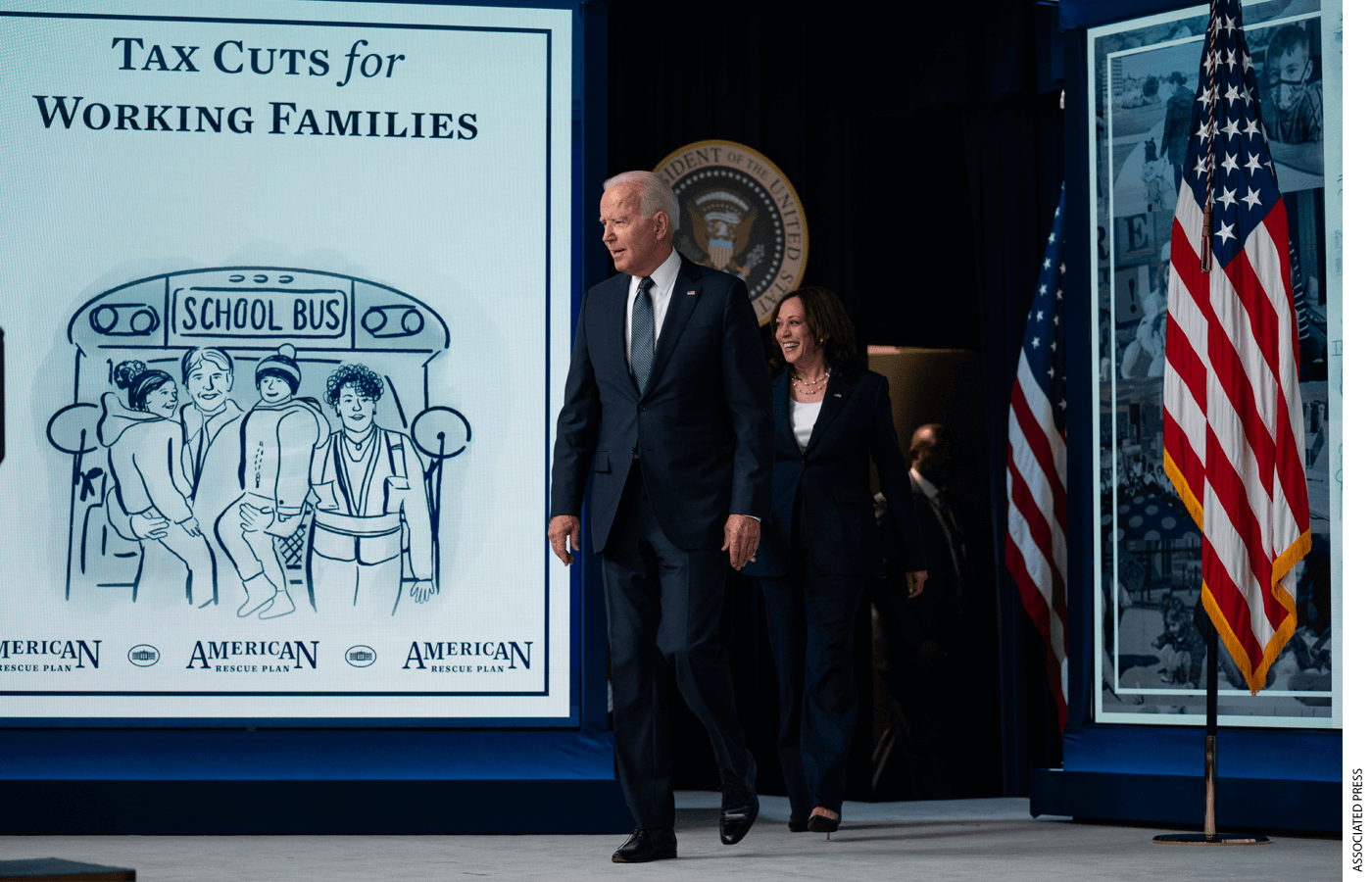
The IRS recently sent $15 billion in Child Tax Credit payments to the families of 60 million children. Parents woke up to find the first monthly distributions (averaging $483 per family) had been directly deposited into their bank accounts. These dollars are part of the $110 billion in expanded child tax credits legislated by this spring’s $1.9 trillion American Rescue Plan Act. While these funds are not targeted at education, the program has opened a temporary window that could help vastly expand school choice.
The American Rescue Plan Act created an unrestricted, refundable child tax credit of $3,600 for children under 6 and $3,000 for children aged 6 to 17. The full credit applies to all families making less than $150,000, and the balance is paid as a cash transfer if the total exceeds their federal tax burden. After a year, unless Congress extends the increase, the credit will revert to $2,000 per child and become only partially refundable (see this issue’s forum, “Should Congress Make the Expanded Tax Credit Permanent?”).
To understand how the child tax credit might be made into something more educationally transformative, consider three things.
First, $3,000 may seem modest compared to the cost of schooling—the sum is less than a quarter of what public schools spend per child each year—yet it’s more than 60 percent of tuition at a typical Catholic elementary school. In fact, $3,000 isn’t much less than the average voucher awards (of $4,000 to $5,000) in states like Indiana, North Carolina, and Ohio.
Second, at this moment, governors and state legislators have exceptional financial flexibility to augment or supersize the child tax credit funds. State budget collections are coming in much higher than was anticipated last year, while the American Rescue Plan Act delivered state and local governments $350 billion in federal Covid aid—atop the $130 billion in K–12 aid.
Third, the child tax credit offers an opportunity to extend school choice to a broader swath of families. President Joe Biden and a Democratic Congress just opted to send child tax credit funds to the families of 80 percent of the nation’s children. If we were to stipulate that choice programs should serve the kids whom these officials deemed in need of these funds, that would vastly expand the ranks of the eligible. It would be awkward for Democrats to argue that middle-class parents need federal help paying their bills but are too well-off to merit state help in defraying the cost of schooling.
In short, state leaders have the opportunity to offer families expanded educational options at a time when support for school choice has exploded. The most promising tack is to augment the federal tax credit for any family that chooses to spend its funds on school tuition or another documented educational cost. A temporary 50-percent state match for families who use the funds to pay tuition could make the credit for many worth about as much as the voucher offered in leading school-choice states; a 100-percent match, funded with general Covid aid, could make it exceptionally large.
Such a move allows states to radically expand the ranks of the eligible while hewing to the eligibility criteria endorsed by Democratic leaders. (In our school life column for this issue, Robert Behning, the chair of the Indiana house education committee, makes precisely this argument.) The resulting program would only run as long as the expanded child tax credit, but it could spark a taste for choice among many.
State leaders should also explore ways to augment the credit with education savings accounts, and then help parents understand how to marry the two. Earlier this year, for instance, West Virginia enacted its first education savings account program, providing eligible families with $4,600 per child (See “School Choice Advances in the States,” features). Combined with the maximum child tax credit payment, that yields $7,600 per child—an amount that exceeds the cost of tuition in 9 out of 10 West Virginia private schools. Energetic use of the bully pulpit could encourage some families to think of child tax credit payments as education-choice funds.
The expanded child tax credit is a one-year program. If it goes away, children will have benefited and the constituency for choice will grow. And if it becomes permanent? Then state leaders will have the opportunity to do even more.
Frederick M. Hess
Executive Editor
This article appeared in the Fall 2021 issue of Education Next. Suggested citation format:
Hess, F. (2021). Tax Credit Could Boost Choice. Education Next, 21(4), 5.


